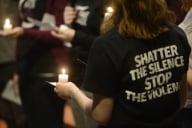You have /5 articles left.
Sign up for a free account or log in.
We are proceeding along during this pandemic as if colleges and schools are light switches. We are closing and then contemplating reopening them as if all we had/have to do is flip the switch, and I am not referencing the TikTok challenge of the same name.
In the midst of the COVID-19 breakout, many educational institutions have shuttered their physical plants; some have turned to online learning as a means of educational delivery. As of the end of March, more than 1,100 colleges and universities have shuttered, impacting some 14 million students. It was also estimated that 70 percent of public and private K-12 schools had closed, affecting more than 55 million children. And those data do not include the closure numbers for nursery schools and daycare centers.
Some of these institutions have set dates for reopening, albeit recognizing that this is a moving target. Others have closed for this academic year, meaning they plan to reopen in fall 2020. Whether institutions reopen sooner rather than later, we need to plan for these reopenings rather than just flipping the switch and expecting we can return to where we were pre-pandemic. Would that it were that simple.
Reopening Wisely
Many things need to take place prior to reopening successfully, and by that I mean more than opening a locked door. I mean returning in ways that enable students of all ages and at all stages to continue their educational progress successfully, both educationally and psychosocially. And therein lies the rub. What has happened between closure and reopening -- the Corona Gap is how I will term it -- has had profound effects on students and educators, and those impacts differ from community to community, family to family, student to student. The Corona Gap has been traumatic for many people; it has disrupted our lives in innumerable ways, some anticipated and some unanticipated.
I appreciate there are naysayers who will chant, no need to coddle; this virus situation isn’t that bad; buck up and be tough. I’m sorry, but that posture seems totally out of touch with the realities of the moment. It is not coddling or being a snowflake to reflect wisely on how to respond to a traumatic moment in our nation and in the lives of our students, faculty and staff.
Now, we have some experience with reopening schools postdisaster. With the abundance of school shootings and natural disasters, we have a repertoire of strategies and real-life experiences on which to draw. I helped a law school reopen post-Sept. 11, and that wasn’t easy. We wrote about it; we had symposia; we had therapists on-site for weeks.
The Corona Gap
But the Corona Gap is different in one huge respect: people have been quarantined and have not been readily available in the flesh to communicate, share, engage and touch those affected by the virus or the threat of the virus. Pause for a moment and think about all the scenes of communities after a school shooting: they have come together for memorials and vigils; there have been abundant hugs shared. Think about the activism generated after the Parkland shooting. Some of us remember Kent State.
The Corona Gap has involved a deprivation of the primary strategy for overcoming trauma: connectedness, touch, reciprocity, human engagement. Gone.
The list of strategies for reopening is long, but we need to be reflecting now especially on three central things.
The key word here is now. By listing them and describing them, it is my hope that we will move away from college and school reopenings with a flip-the-switch mentality and move to a vastly more thoughtful and nuanced approach that does justice to the impact of the closure on students, educators, parents/caregivers and communities. It is not too soon to begin our thinking about reopenings.
Three Strategies
Strategy One: We need to be working with students now during the Corona Gap in ways that open their pathways to learning and enable them to express how they are feeling about the quarantine and the stay-in-place orders that surround us. In this gap period, we must find new ways in which to remain connected, a central feature of trauma responsiveness. By doing this now, we ease the re-entry back into college or school as and when these institutions reopen. We need to be aware and respond to the psychological price of the Corona Gap.
There is no single way this can be achieved. We can do it through a variety of online and off-line activities, recognizing that what is beneficial for one community may not work in another. Consider these examples.
- Teachers/professors can reach out to individual students via email or cell and ask how they are doing and engage them in conversation that shows the students are cared about even if they are not in the classroom.
- For younger students, we can have students in communities that live within walking distance of each other all draw something similar (e.g., a morning sun, stars in the sky at night) and then tape these drawings facing outward in their windows. Then families can walk around the neighborhood and count the number of suns and stars and share the numbers they found online.
- Parents can read books to children that focus on problem solving, friendships and even the difficult emotions that social distancing provokes. I have written a children’s book for just that purpose.
- For college students, we can create a shared activity that they can work on at a distance yet collectively. For example, students could design and make masks and then develop a distribution chain -- fashion design students, business students and art students could do this together. Colleges with health-care programs can work on ways their students can volunteer in a safe way to help communities: gathering data on caseloads, arranging food deliveries, serving as an information hotline to connect community members to needed resources. Colleges can serve as clearinghouses for students’ engagement.
In sum, we need to create ongoing connections with students during the Corona Gap.
Strategy Two: We need to make sure that whenever colleges and schools reopen, there is a considerable period of planning and development among each institution’s educators before students actually return to the buildings and classes and, if applicable, residential halls. I am suggesting double or triple the normal pre-opening preparation time.
During this time period, educators will need opportunities to reflect on such critical issues as: What trauma symptoms will students display? How will that affect classroom management? How can we mitigate the symptoms that are observed? How will we/should we restart classes? Will we change our syllabi and learning materials? Should we eliminate whatever was in the classrooms when the institution closed and reopen with new, clean desks and walls and halls? How will students who needed added supports get those supports, whether academic or psychological? What strategies can we deploy to lower the autonomic nervous systems of the students?
This will also be a critical time for educators themselves to process what has happened and assess their own personal readiness to restart. No doubt they have questions and concerns of their own. If these can be processed in advance of students returning, there is a better chance the reopening will proceed smoothly. Consider shared relevant readings that can be discussed. Ideally, institutions will have psychologists or psychiatrists on hand during this preparation period and thereafter to help -- ideally individuals from within or familiar with their culture and community. Now is not the time for strangers!
In sum, our educators need time and space to prepare, with guidance, for the return of students to their institutions.
Strategy Three: We need to ensure that students don’t become even more stressed when they return to their educational institution. No placement tests for new entering students (assuming they arrive). No SAT or ACT for prospective applicants. No immediate pushes for decisions on topics like this: What is your major going to be? Will you have the courses you need to satisfy your already-chosen academic program and graduate from college and, if applicable, become licensed? Will you have the credits and tests you need to go to college? Students are already thinking about, fretting about, worrying about these issues. (There is a plethora of student residential life issues, too, which need their own article.)
I’m not recommending that educators ignore these questions. Instead, I’m suggesting that we reflect thoughtfully on how to answer these questions, and if readers are current educators and don’t have answers, to be honest about that and seek out the answers. These questions won’t go away in a day. Honesty, authenticity and transparency are the keys to overcoming trauma.
For all institutions, I want to suggest looping, something primarily done in elementary schools. Looping is when teachers stay in place with the same group of students as they progress forward. For example, students have the same teachers for grades one and two. Looping has many benefits. It allows students to progress at different levels. It enables teachers/professors to work together (co-teaching has many benefits in times of crisis), which provides support and camaraderie. Picture groups of college and graduate students working with the same professors to rebuild momentum and collaboration and connection. Silo busting might just happen to help us move forward across time and space and disciplines.
In sum, we need to lower the stress levels and encourage stability and structure and communication in classrooms and among students and their educators.
A Final Thought
The idea that we will go back to where we were pre-pandemic is a pipe dream. Once you have an experience like this, you are forever changed. The question isn’t how colleges and schools can bounce back to the status quo ante. No, that will never happen. The question is how these institutions can move forward thoughtfully, wisely and with a keen awareness and understanding of the price we are paying for the Corona Gap academically and psychosocially.
Bottom line, there is no timeline for adjusting to our new educational environment. And one thing is for sure: it won’t be a fast transition.








